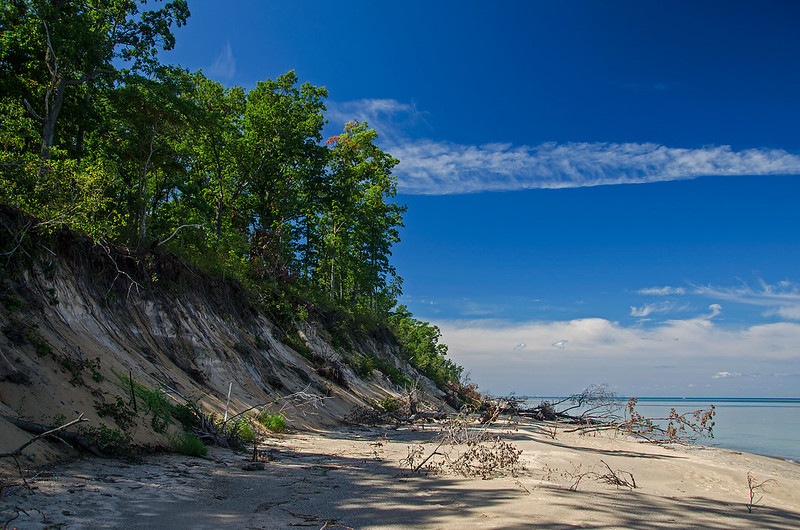
Closed to visitors for the past three years, Mt. Baldy continues to change despite the lack of foot traffic. Following the near fatal incident of a boy falling into a sinkhole on a closed portion of the 125 foot tall living sand dune, the area was closed for safety concerns. According to the park, other sinkholes cannot be ruled out, so the area is not open to visitors unless accompanied by a park ranger.
The emergency conditions, as they're called, apply to much of the area, and signs would have the public believe foot traffic is the reason for much of the erosion along the dunes. Save our dunes! Keep off the dunes! Anyone who has visited this national lakeshore over many years can clearly see, Lake Michigan is the culprit, not people. In fact, the paths visitors used to walk along the dunes from Central Beach to Kintzele Ditch are long gone, washed into the lake by waves, not trampled by feet.

<
The view of Mt. Baldy from the beach has changed over the past few years. The photo above was taken in September 2016. One can barely see Mt. Baldy due to the erosion of the beach. The view is blocked because the beach has washed away.
Below is a photo in approximately the same area, taken in 2009. Standing on the beach, Mt. Baldy is clearly visible. It's quite a transformation, and it shows the power of Lake Michigan.


This erosion has revealed interesting things along the beach including a thick layer of clay that was once buried under the sand dune. The clay has the appearance of rock, especially when it's broken off by the waves.

This could be the early stages of rock formation, and in a few thousand more years, this clay could become rock. But for now, the lake continues to claim more and more of the shoreline for itself. It's an interesting process - a natural process - that has been going on for thousands of years, and will continue with or without human intervention. While we must stop needless and careless damage to our environment, we must also allow our children to experience the dunes environment first hand, and that means walking through it, and touching it.











